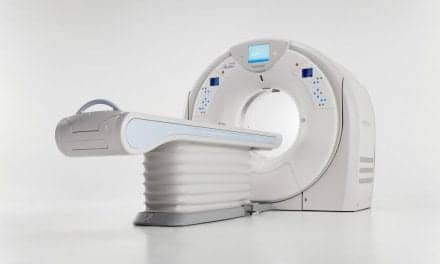 |
The Holden Comprehensive Cancer Center at the University of Iowa, Iowa City, was founded in 1980. By 2000, it had been named as a National Institutes of Health Cancer Center, and that designation was renewed in 2005. Cancer patient care, research, and education involving 38 university departments in six colleges are coordinated by the center. A center of excellence in image-guided radiation therapy operates within the department of radiation oncology, which moved to a new facility in May 2005. Whole-beam, intensity-modulated, and stereotactic therapies are offered, along with brachytherapy and radiosurgery.
Among the center’s own imaging units are a large-gantry, multidetector-array CT scanner with respiratory gating that can obtain 40 rows of data and a 3T MRI scanner used for both imaging and spectroscopy. Although many radiation oncology departments elsewhere must use imaging equipment located in other departments or are forced to make do with scanners handed down when their institutions upgraded their radiology-department equipment, Holden Comprehensive Cancer Center found those restrictions unacceptable (particularly since nearly one fifth of the busy center’s patients have MRI scans).
The center’s staff demanded images with a high signal-to-noise ratio and high spatial resolution, so diagnostic imaging parameters would not have been ideal. A much longer scanning time is needed to meet the center’s requirements, but having its own equipment permits this. The best equipment, located at the center, is considered essential to treatment planning and delivery. Defining a tumor’s initial boundaries and seeing that it remains in position during treatment call for high-resolution imaging. Incredibly precise three-dimensional conformation of the radiation dose to the tumor can be achieved using high-resolution imaging to delineate tumors, reducing damage to noncancerous tissue and improving tumor control. Smaller fields, with more accurate delivery, can improve outcomes.
Holden Comprehensive Cancer Center made nearly paperless operation for its department of radiation oncology a reality when the department moved into its new space. COHERENCE and LANTIS integrated software suites from Siemens made this possible by coordinating radiation-therapy planning, management, and documentation, from the patient’s first telephone call through the completion of treatment and final billing. An electronic patient record designed for oncology is part of the system at the center and is fully compliant with privacy regulations. Many time-consuming steps in the provision of treatment have been condensed from hours to minutes, and center staff say that they can deliver high-quality care at a reduced cost as a result.
The department also performed a complete analysis of its work flow with the help of Siemens, saving staff time and ensuring that all relevant information is available to everyone who needs it at all times (as well as protected from access by those who should not see it). Center staff recommend approaching the conversion to paperless operation as a single operation, not a series of small steps, because having old and new information systems in operation at the same time will cause users to fall back on their old system. Users at Holden Comprehensive Cancer Center characterize LANTIS and their newly electronic environment as not just a better way of working, but a foundation for better patient care.
Ajit Singh, PhD, is President, Siemens Oncology Care Systems





